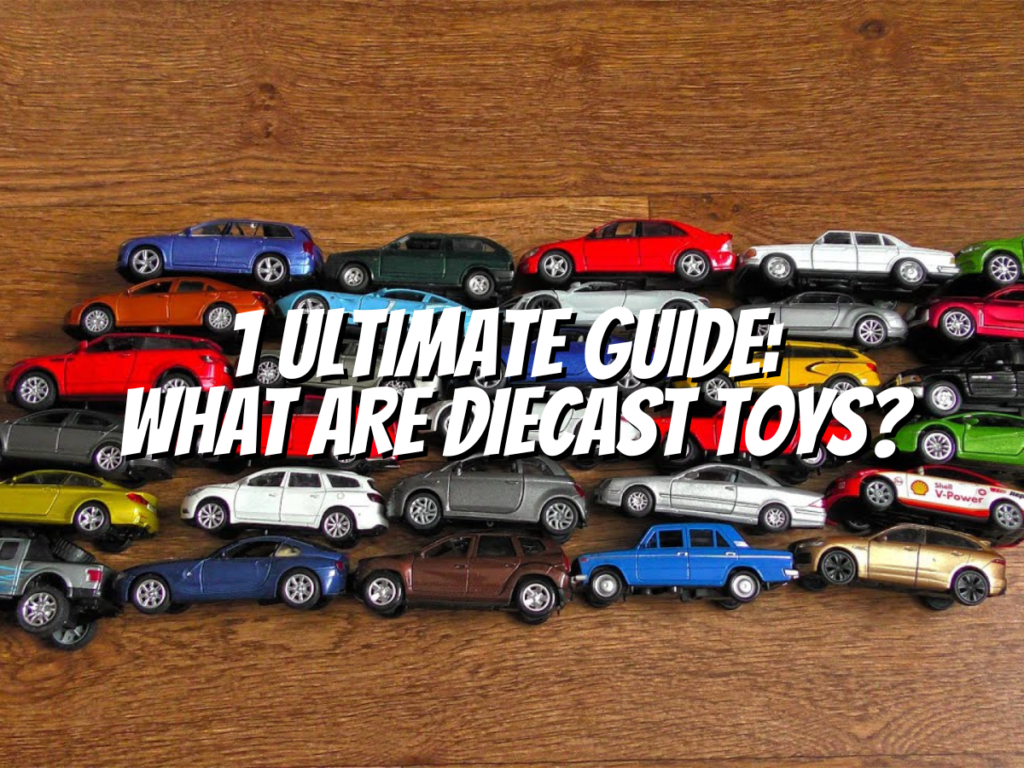In a world of high-tech toys and virtual reality, diecast vehicles are a retro favorite that has remained popular for decades, but what are Diecast toys?
While they may not be as popular as they used to be, diecast toys still stand the test of time as some of the best models on the market.
So whether you’re looking to collect diecast vehicles or want to know more about what makes them so special, we’ve got all your questions answered here!
What are Diecast Toys?

Diecasting is when molten lead, zinc alloy, or plastic is poured into a mold to create a specific shape, resulting in a toy or collectible model.
These toys have metal bodies and components made of plastic, rubber, glass, or machined metal.
Toys made of plastic and a combination of plastic and other materials use injection molding. Still, the two processes are distinct due to the characteristics of the materials.
How are They Made?
Die casting or metal casting is used to make diecast models and toys. The desired model is cast by pouring or pressing molten metal into a prefabricated mold or die.
Filling the die quickly under high pressure ensures the cavity is filled before the cast solidifies, which is crucial. With this method, models can be mass-produced without sacrificing quality or consistency.
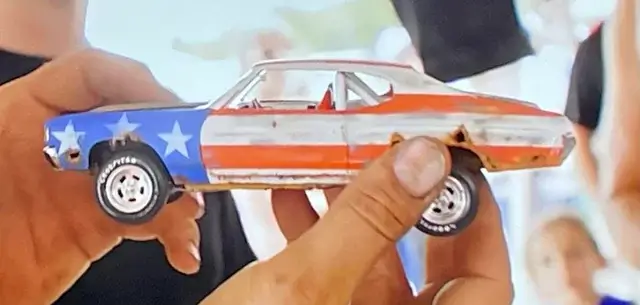
Diecasting metal is typically an alloy of zinc, aluminum, and copper, known as Zamak (or Mazak in the UK), but it was originally a lead alloy.
Scale models of automobiles, aircraft, military vehicles, construction equipment, and trains are the most common diecast vehicles.
However, the process can create virtually anything, including Monopoly game pieces, furniture handles, and metal garden sprinklers.
Leading Brands
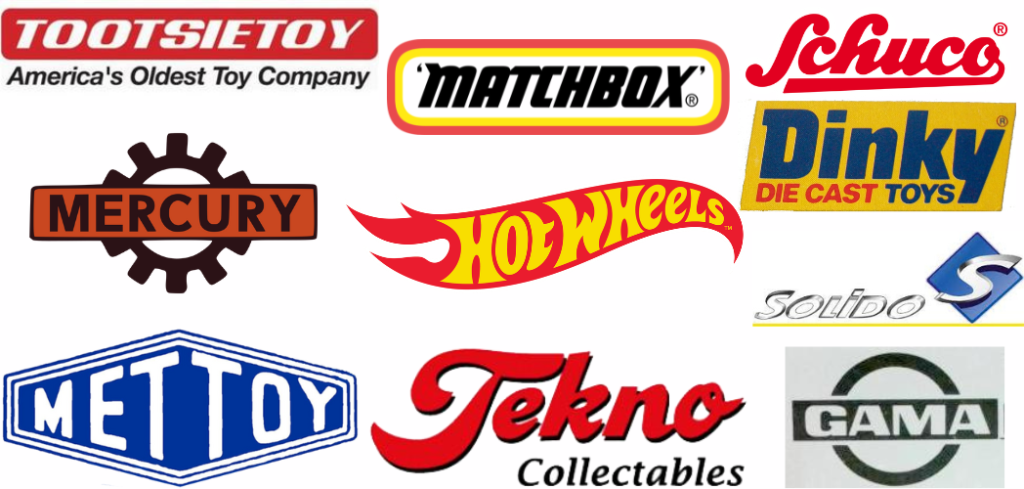
Meccano (Dinky Toys), Dowst Brothers (TootsieToys), and Fonderie de précision de Nanterre (Solido) were among the first companies in the early 20th century to produce diecast toys.
The earliest models to hit the market had no interior and a small body. As previously mentioned, zinc pests frequently occurred in the early days because of impurities in the alloy, causing the casting to distort, crack, or crumble.
Therefore, high-quality diecast toys from before World War II are extremely rare. The modern ultrapure Zamak alloy didn’t have this issue.
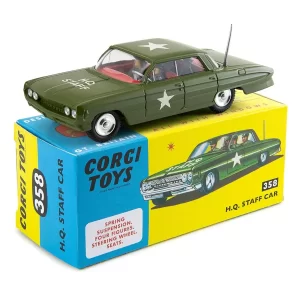
Diecast toys were first produced by Lesney in 1947. Because there were always 75 unique models in the line, it was given the name “Matchbox 1-75,” after the small boxes used to store matches.
Due to their widespread appeal, the name “Matchbox” eventually came to be used to refer to any brand of diecast toy car. Diecast toys gained popularity as their detail and quality improved throughout the 1950s.
New entrants included Mettoy (makers of the popular Corgi brand), Mercury (Italy), Tekno (Denmark), Schuco (Germany), and Gama Toys (Germany).
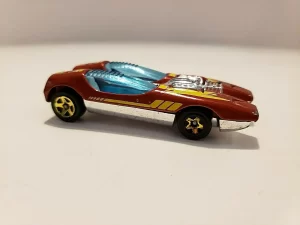
In 1956, Corgi Toys entered the market, and their models were groundbreaking because they featured opening doors and windows. Mattel received criticism for not having a line of toys for boys to complement their Barbie dolls, so in 1968, they introduced Hot Wheels to the United States.
Hot Wheels quickly overtook Matchbox as the most popular diecast car on the market, becoming one of the world’s top sellers due to their sleek design and high acceleration (thanks to their low-friction wheels and axles).
In addition, designers, executives, and others who have contributed significantly to the diecast industry have been honored with induction into the Diecast Hall of Fame since 2009.
Model Scales
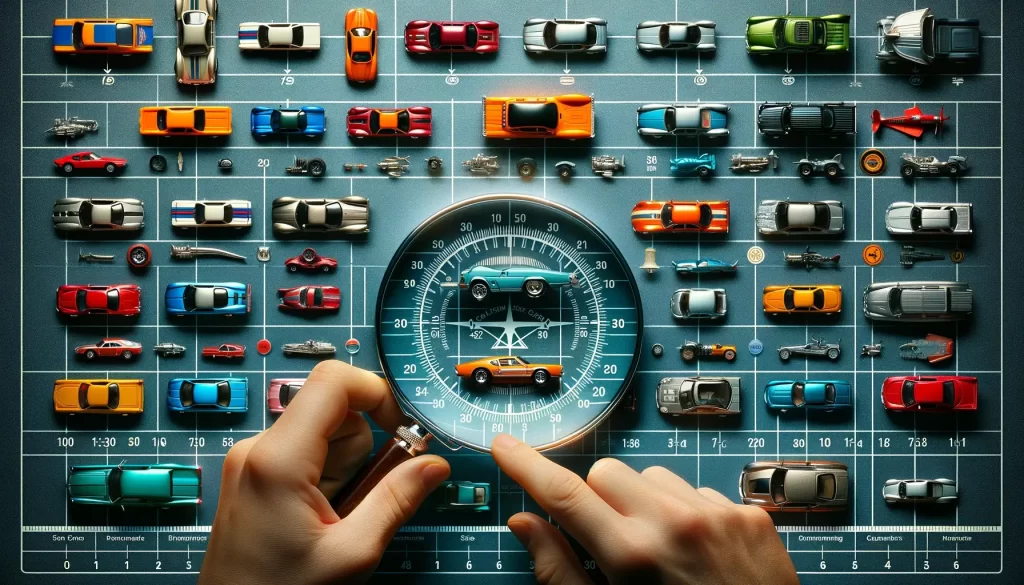
- 1:12 Model Scale – Extremely large, intricate models, typically 14 or 15 inches (36 or 38 centimeters) in length, aimed primarily at adults. The price of these models is typically much higher than that of the 1:18 scale.
- 1:18 Model Scale – Models aimed squarely at adults, measuring at least 7 inches (18 cm) in length and featuring great detail.
- Although the United States is the primary market, these are also manufactured on a large scale in Europe, Asia, and Australia. The typical age restriction of 14+ is printed on the packaging. Collectors are typical users of this scale.
- 1:24 Model Scale – In the 1980s, this scale became the norm among international diecast model manufacturers such as China’s Mebetoys and Italy’s Bburago.
- Today, this scale is also a focal point for companies like Maisto and Jada Toys. This scale is also widely used by other companies like Franklin Mint and Trax.
- The typical age restriction listed on packaging is 8+, though some brands, including Welly, have a 14+ restriction on select models.
- 1:25 Model Scale – Although there isn’t much of a numerical difference between the 1:24 and 1:25 scales, the two represent very different modeling approaches in the past.
- In the years following World War II in the United States, 1:25 scale plastic models and kits were widely produced for advertising and educational purposes.
- 1:32 Model Scale – Britains have used this scale for decades, as have Ertl and Siku; it is an intermediate size and is, therefore, most common for model tractors and other agricultural vehicles. The 1:32 scale is popular among collectors of classic car brands like Signature Models.
- 1:34 Model Scale – First Gear Models, a company based in the United States, uses them almost exclusively in their large-scale diecast trucks.
- 1:36 Model Scale – A common scale for toys deemed more suitably sized for children, such as Maisto, Kinsmart, and Welly models, popularized by Corgi in the 1970s.
- 1:43 Model Scale – The most widely used scale for model cars, originating from the 1930s. Dinky popularized this scale to work with the O gauge model railroads, and it became widely used.
- In contrast to the United States, where this scale is less popular, it is widely used in Britain, Europe, Japan, and Australia. It wasn’t until the 1970s that 1:43 scale models stopped being primarily sold as toys. The popularity of 1:43 scale handbuilt models in resin and white metal spread across the globe, reaching as far as South Africa. Even trucks, typically found in the more manageable 1:50 scale, were not uncommon.
- 1:48 Model Scale – Diecast models of airplanes in the common 1:48 scale used for plastic kits are available from several manufacturers. This scale is also used for diecast military vehicles and model train accessories.
- 1:50 Model Scale – The most popular measurement system for heavy trucks and buses, including those used in construction.
- 1:55 Model Scale – Primarily employed by the German toy manufacturer Siku for its line of automobiles and trucks. This is the approximate scale of Mattel’s Disney-Pixar Cars Diecast Line.
- 1:60 Model Scale – Scale used by many military modelers in the immensely popular Dinky Toys series of pre-and post-war military vehicles (including military Dinky Supertoys).
- 1:64 Model Scale – Well-liked for model American farm equipment and trucks.
- Toy cars of this scale include the Matchbox, Hot Wheels, Johnny Lightning, Greenlight, and model versions of the NASCAR racecars. Kyosho, Aoshima, and CM’s Corp are just a few Japanese manufacturers who have released highly detailed 1:64 scale models of both racing and road vehicles in recent years.
- Biante and other manufacturers offer this size in their Australian-made models. You can use this with your S-scale model trains.
- 1:66 Model Scale – A Schuco standard, roughly equivalent to a ‘Matchbox’ size.
- However, it must be borne in mind that most manufacturers of smaller diecast did not regularly stick to one scale; rather, they stuck to one size, typically between 2.5 and 3 inches in length, so that trucks and sports cars were made to look and feel the same and fit into the same packaging and small hands.
- 1:72 Model Scale – Due to their compatibility with 1:72 scale plastic model kits, military diecast armored fighting vehicles are the most common application.
- Cars from Real-X, Hongwell, Yat Ming, Kyosho, Epoch Co., and others have fine details. Glass bulbs, rubber tires, and authentic paint jobs are just a few of the details.
- 1:76 Model Scale – Buses and lorries in this scale, made by companies like EFE and Corgi OOC and Trax Models in Australia, are quite popular in Britain, Australia, and Hong Kong.
- With over 90 unique cars and commercial vehicles to choose from, Oxford Diecast’s introduction to the market was a game-changer.
- These models were created to complement OO scale model railroad layouts, but they quickly gained popularity among collectors.
- 1:87 Model Scale – H0 scale model trains are more common in the United States and continental Europe, which are compatible with them.
- These models are typically plastic and are produced in large quantities by German firms like Herpa and Wiking.
- Compact and reasonably priced models from Oxford Diecast have helped boost the popularity of the 1:148 scale in the United Kingdom, which is compatible with British N scale model trains.
- 1:148 Model Scale – This scale, compatible with British N scale model trains, has seen recent success in the UK thanks to its small size and affordable Oxford Diecast models.
- 1:1200 Model Scale – An industry standard for ship models and fittings. From 1959 to 1965, Lines Bros. Ltd. produced various tri-angular model ships under the Tri-ang Minic Ships.
- 1:1400 Model Scale – A standard measurement for airplanes.
Changes in the Industry

Despite their widespread use, many diecast companies failed during the 1980s. Reflecting the UK economy at the time, Meccano (Dinky), Matchbox, and Corgi collapsed within three years.
It was now extremely difficult for English manufacturers to compete in the global market. Mattel’s manufacturing operations had been largely relocated to Asia for some time.
Universal Holdings, a Hong Kong-based conglomerate, acquired Matchbox and relocated production from England to Macau. When Mattel acquired Matchbox in 1997, the Hot Wheels and Matchbox 1-75 lines became sister products. Both brands remain on the market under their original names.
Mattel, which had recently acquired Corgi, relocated the company’s headquarters from Swansea, Wales, to Leicester, England, and brought all production to China. Manufacturing for both Oxford Diecast and Corgi has begun at the former Corgi facility in Swansea.
Even after the Liverpool factory had shut down, Matchbox purchased the Dinky Toys brand name. As a result, production has picked back up in China.
Parts of the Matchbox line were sold to an Australian company called Tyco (no relation to the Tyco line of HO scale trains, originally made by Mantua Metalworking in New Jersey, US), and later on, a group of Corgi executives purchased the Corgi Classics line back from Mattel.
Lledo, founded by former Matchbox partner Jack Odell, effectively emerged from Matchbox’s bankruptcy. Odell theorized that it was possible to profit by making British collectibles for British collectors.
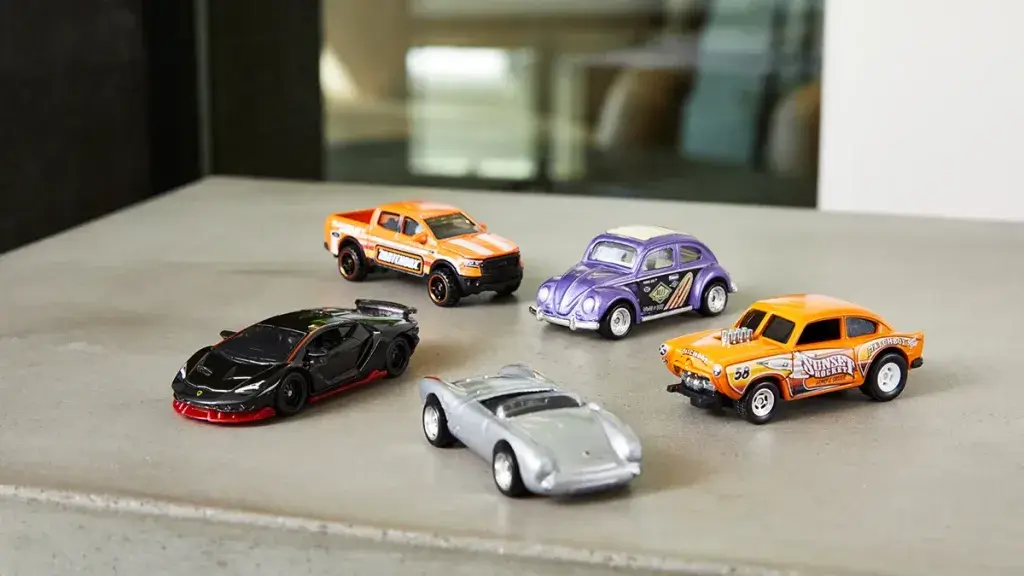
Lledo’s “Models of Days Gone” line of diecast vehicles was first released in 1983 after the company had taken over production at the former Matchbox factory in Enfield. Some of the most iconic Matchbox toys from the 1960s and 1970s were recreated for the first Days Gone series.
The 1980s saw a surge in demand for Lledo models. This prompted the company to diversify (including the Vanguards line of classic post-war British vehicles) before eventually going out of business in 2002. Corgi bought a chunk of their line and moved manufacturing to China.
Before moving production to a plant it owned in China in 2000, Oxford Diecast was based in Swansea, where it designed and manufactured a line of promotional vehicles. In this regard, it was the last major UK manufacturer of diecast models before production moved to China (where it owns and operates its factory).
Different Themes
Poppy (now part of Bandai) was a Japanese toy company that produced diecast toys based on the 1970s smash hit anime series Super Robot. Chogokin means “Super Alloy” in Japanese, which the fictional metal robot Mazinger Z of the future is said to be constructed.
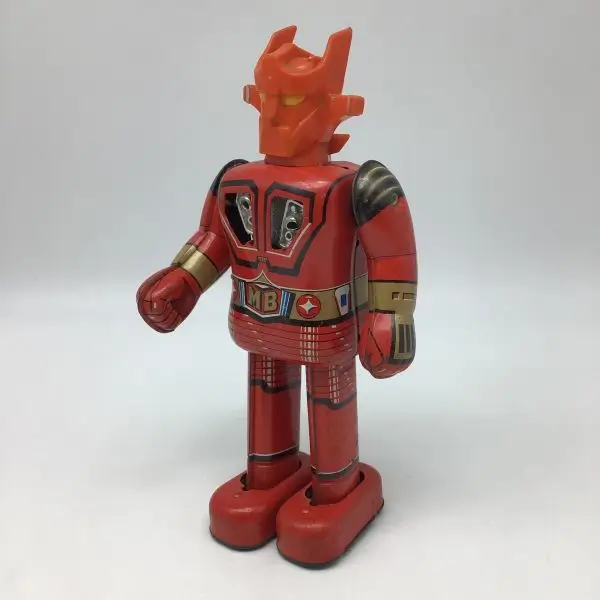
Popy’s other line, Jumbo Machinder (known in the West as Shogun Warriors), had a similar effect on kids because of the toys’ metal construction, leading them to believe that their toys were made of the same material as the “real” robots.
Some of the line’s figures even made it to the West, proving its widespread appeal. Bandai revived the Chogokin name in the late ’90s with their Soul of Chogokin line of adult collector figures with metal parts, followed by the smaller but similar Super Robot Chogokin line.
Dueling product lines from Corgi (the Original Omnibus Company) and Gilbow Holdings (Exclusive First Editions, or EFE) battled it out in the late 1980s and early 1990s British toy bus market.
This 1/76 scale is compatible with the ‘OO’ gauge model trains from the United Kingdom. In the 1990s, diecast cars in the 1:18 scale enjoyed massive success in the United States, but their appeal had waned by the turn of the millennium.
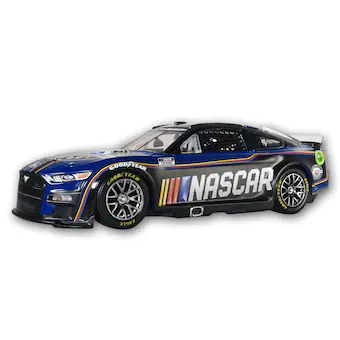
The 1990s also saw a proliferation of NASCAR diecast cars and trucks, painted to resemble the racing teams’ liveries, as the sport of stock car racing gained popularity in the United States.
Although Racing Champions was a popular option, there were many others to choose from. Military and aviation diecast models also saw a surge in demand. Dinky may have been a pioneer in the toy airplane industry, but the 1980s and ’90s saw the rise of several new competitors.
After the bankruptcy of Dyna-Flytes in the 1990s, other manufacturers such as Schabak, GeminiJets, Herpa, and Dragon Wings swooped in to fill the void in the market.
With various vehicles in the 1:76 and 1:148 scales, two of the most popular among British railroad enthusiasts, Oxford Diecast entered the market in 2005. Within five years, the company had cornered the UK market thanks to this and a drastically improved product in its 1:43 scale range.
As they grew, they entered into licensing agreements with BBC TV for the Top Gear program and UK Haulier Eddie Stobart.
How to Start Collecting?
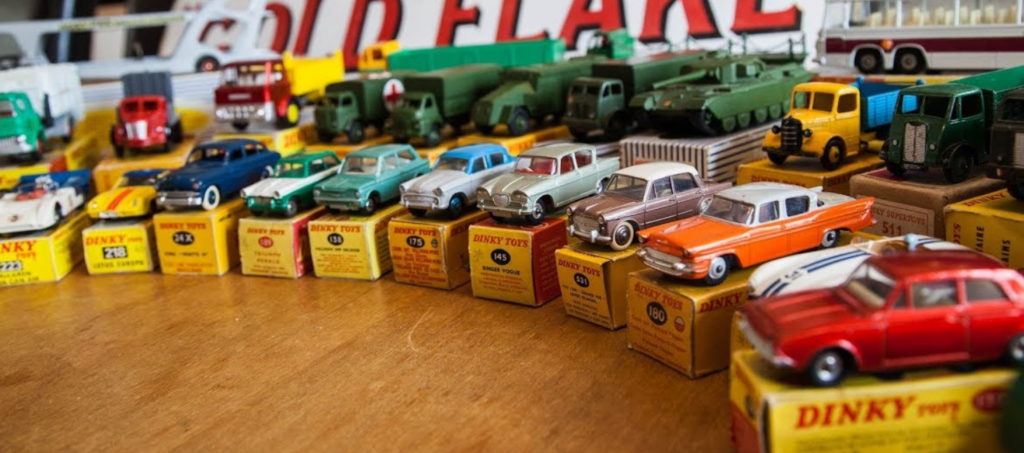
You should have a better grasp of diecast models and be eager to begin your collection now that you know more about them. However, here are some things to think about before you do that:
- Model Size – Diecast models, like their larger-scale counterparts, are available in several common dimensions, including 1:12, 1:36, and 1:43. Size preferences for diecast toys.
- Model History and Period – What period are you interested in? The present-day or the early 20th century? You can hone in on specific periods to help you better organize your collection and create stunning historical displays.
- Model Brand – Diecast models are the product of a select few manufacturers, each with a distinct back catalog. If you want a variety of excellent copies,
Before you go…
Diecast toys have been around for years, and they’re still going strong. The diecast industry is constantly changing, but it’s always been about providing great toys for kids to play with. If you want to get started So, collecting these fun little cars and trucks, plenty of options are available today!
Check out my next article: “How Do You Start Collecting Diecast Toys?“
Related Articles:

